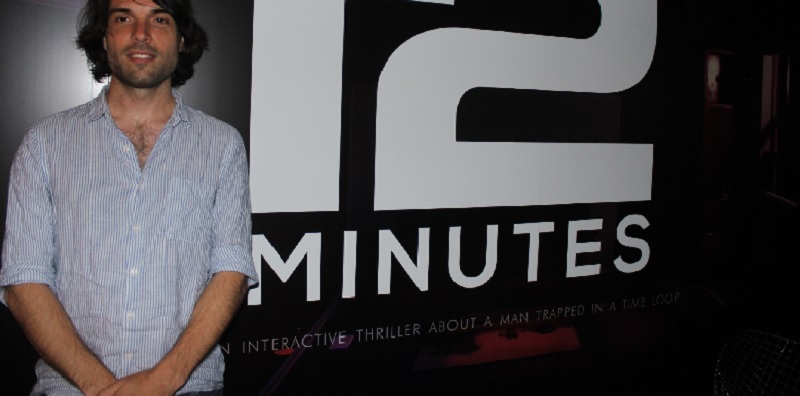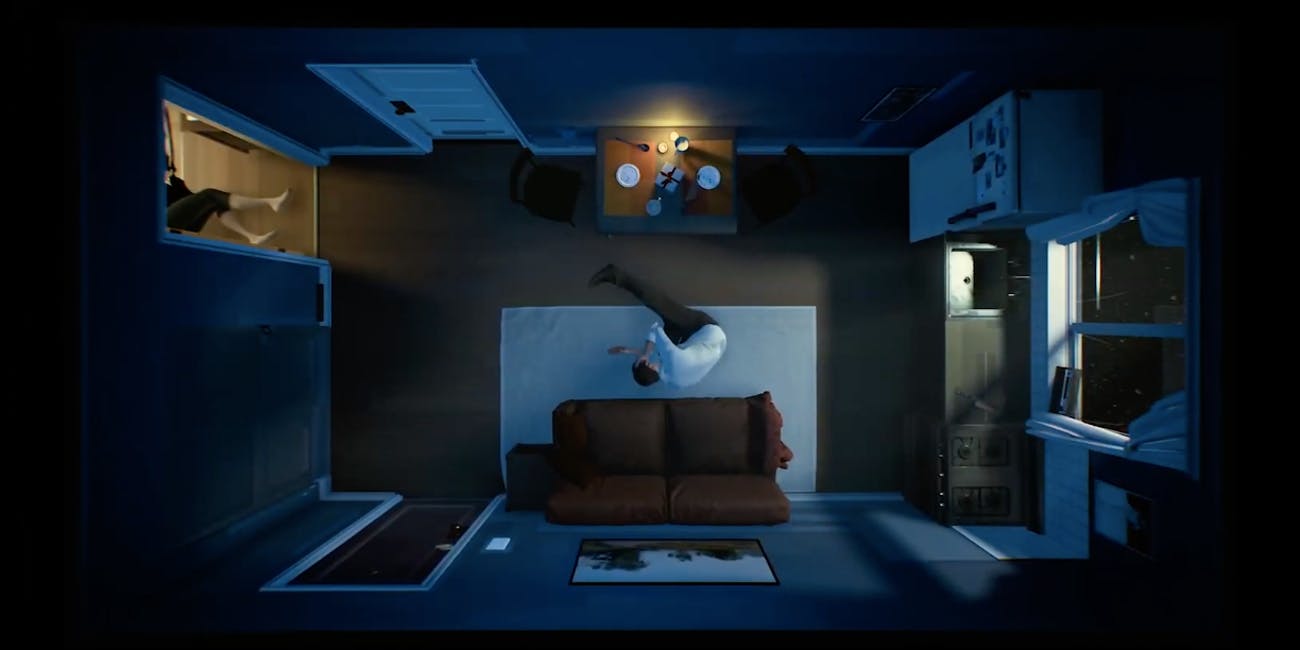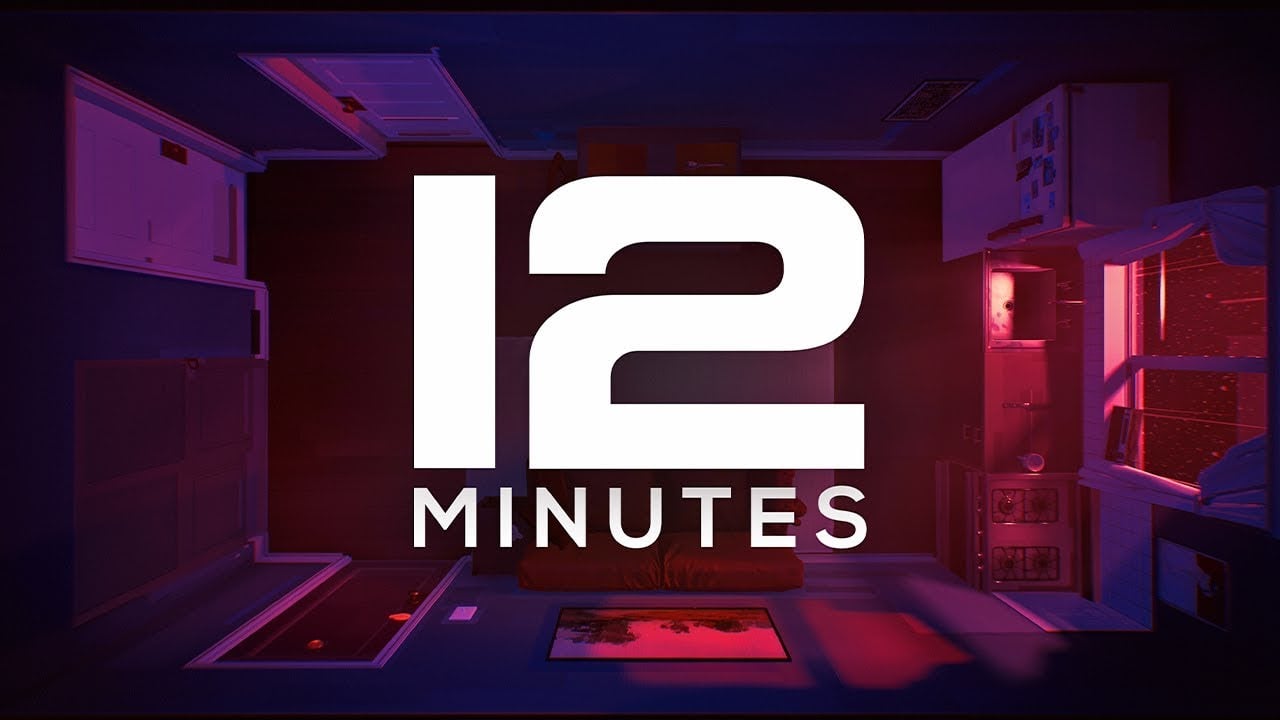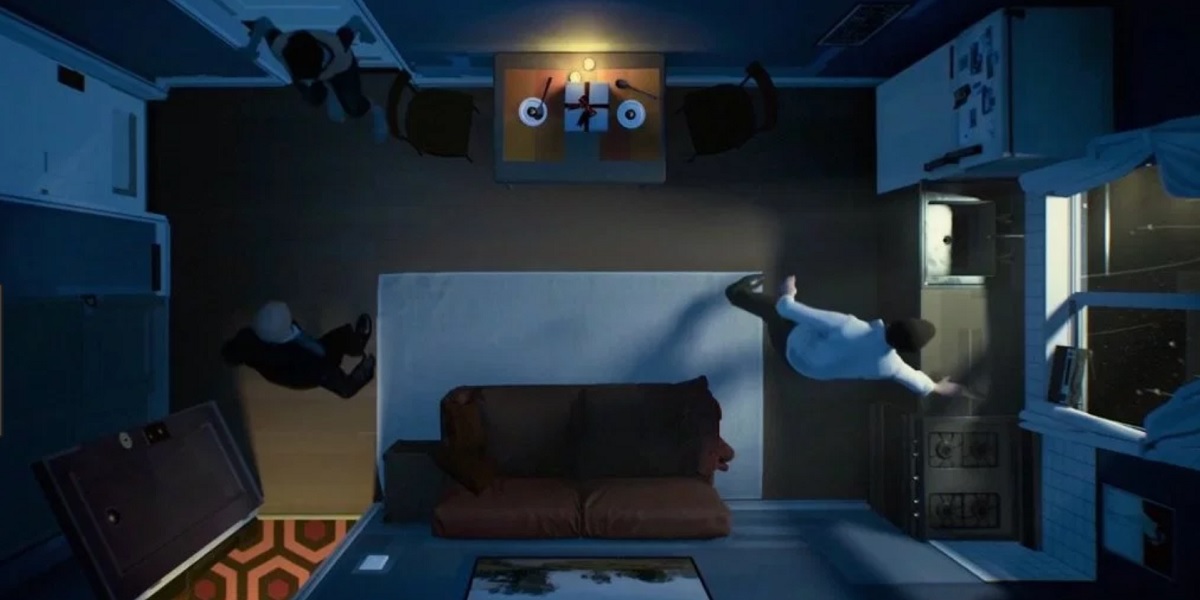12 Minutes caught my attention during Microsoft’s event at the Electronic Entertainment Expo (E3) game trade show last week in Los Angeles.
In the game from developer Luis Antonio, each gameplay session lasts 12 minutes. And it plays over and over again, like Groundhog Day. Your job is to unravel a mystery. It is shown from a top-down view of an apartment, where a couple lives. The wife wants to tell her husband that she is going to have a baby. But they are interrupted by a knock on the door.
At the door, a policeman enters and says the wife is under arrest for murder. If you, playing as the husband, object, then he cuffs you and chokes you. In the first 12-minute playthrough, that’s all that happens. Your job is to change the outcome by exploring all of the possible choices the husband can make during the 12 minutes.
I spoke with Antonio about the game in a group interview. Annapurna is publishing the game.
June 5th: The AI Audit in NYC
Join us next week in NYC to engage with top executive leaders, delving into strategies for auditing AI models to ensure fairness, optimal performance, and ethical compliance across diverse organizations. Secure your attendance for this exclusive invite-only event.
Here’s an edited transcript of our interview.

Above: Luis Antonio is the developer of 12 Minutes.
Luis Antonio: This is an interactive thriller about a man trapped in a time loop. You come home from work. You have dinner with your wife. Then this cop shows up and accuses your wife of murder. He beats you up and you pass out, and then you go back to the start of the day. You have to use your knowledge of what’s going to happen to try to change the outcome and break the loop. The loop lasts 12 minutes, all in real time. If you’re experienced at adventure games, it usually takes six to eight hours to get to a conclusion that feels satisfying.
The drive behind this project — I wanted to explore time loops. I realized that the interesting thing about this is the accumulated knowledge that you get. As a player, each time you play a loop, you’re going to learn more about the situation, and you’ll use who you are and your interpretation of the events to decide what to do. The game never gives you any objectives and it doesn’t tell you what to do. It’s all up to you.
I also looked at other media, like film and novels, in how they used their own tools to convey the narrative and the message. In Memento, the fragmented narrative that Christopher Nolan used to convey the characters, or in the Shining, how Kubrick had the architecture that was always a bit out of place. Trying to bring a bit of that into this. It’s very subtle.
The other main thing is accessibility. I wanted to make a project that everyone could play. That drove some of the art direction. The top-down view means you don’t stress about elevation. You’re not dealing with up and down. The interface is very clean. You just combine objects. You only need one button, just clicking and dragging. It allows you to express yourself without sacrificing any of the deep and complex gameplay.
GamesBeat: Annapurna is publishing?
Antonio: Yes. We’re hoping to come out at the start of next year, early next year.

Above: 12 Minutes
GamesBeat: Is that clock always ticking?
Antonio: The timer? It starts when you get into the apartment. This area is more about learning the controls for the game. When you click, it speeds up the dialogue a little bit. It doesn’t skip, but it fast-forwards. This is it. You just learn the controls in the game. There’s no more going on here. And now the time loop starts.
GamesBeat: Even if you don’t do anything, after 12 minutes you back to the lobby, right?
Antonio: You’ll see. You back to the start of the apartment. If you survive 12 minutes, because the cop comes a few minutes in — it’s like Bill Murray dying in Groundhog Day before he actually gets to the end of the day.
GamesBeat: Is your wife just doing her thing? Do you have to work around her?
Antonio: Or with her. You can interact with her. That’s what it’s about. It’s a bit like a theater play. There are three characters: you, your wife, and the cop, in this very enclosed space. His knowledge accumulates as you play the loop, so the more you know, the more he knows. He’ll experience everything you make him experience.
GamesBeat: So he can recognize when things are different?
Antonio: Oh, yes. The way he speaks with the other characters will change. He’ll do certain things faster.
GamesBeat: When does it switch to the first-person view?
Antonio: That’s when you use objects. When you go to open the fridge or something like that.
GamesBeat: Is this still the first loop?
Antonio: Yeah, this is your first loop. His options are limited at this point. You can only do things based on what he’s experienced. We’re motion-capturing all this animation and doing voice-over, so try and project that compared to what you see of the animation right now.
The thing you’re going to learn as you play through the loop is that it becomes about you and her. It’s about your relationship with her and how you as a player deal with that. And there you are. It’s over. The idea is, we want to convey — this man, in one second, woke right back up, but his brain is still processing that he was suffocated. He just passed out. We’re recording a mocap for every variation on how you get killed.

Above: 12 Minutes
GamesBeat: And did the 12 minutes just start again?
Antonio: Exactly. You can right click to go to the menu as you’re playing the game and see how much time has passed so far. Now you’re back at the beginning of the loop. You see that your dialogue options have changed. You can talk with her about everything you’ve experienced so far. You can tell her about the cop. He’s accumulated knowledge based on everything you did.
GamesBeat: Is there a way you’d describe how this is different from something like Groundhog Day? It seems like you can change more things here.
Antonio: The thing about Groundhog Day –I don’t know if you read the original script for that movie, but he was supposed to be in the loop for like a million years. Groundhog Day has that thing where the writers decided to define what is the “correct” way of making a perfect loop. Once Bill Murray does that the curse is broken.
For me, the interesting thing about the loop, and the nature of the dialogue between you and the game, is that I don’t tell you what a perfect loop is. Even if you come in with that concept, you’re the one who’s putting that into the game.
GamesBeat: Something like Edge of Tomorrow.
Antonio: Yeah, but even Edge of Tomorrow — there’s a way to fix the loop. Everyone wants to stop the cop, and eventually you’ll stop the cop. But then it will become more ambiguous. What now? That’s where it becomes a very rich experience, I think, where you deal with the larger situation.
GamesBeat: But to finish the game, you do need to break the loop some way?
Antonio: Um…you’ll have to play it? I will say that you’ll arrive at a conclusion that satisfies you, where you feel that you’re satisfied with the outcome of the experience. There’s a lot you can learn about the time loop. That was a big question for me, because everyone wants to know that. I’ll say that we took that into account, to give you a satisfactory conclusion to the experience. You’ll feel like you finished this game. But I think you’ll always have a question mark. Did I finish this game?
GamesBeat: Or am I still stuck in this thing?
Antonio: Right. The other thing, you see that your tools for this game are right up in your face. You could stop playing now and you could think, “Okay, I have a mug. I have a present. What can I do to execute this plan?” Like adventure games, where there’s some guesswork — oh, I had no idea this character could jump out the window — you already know exactly what you can do. For example, if you drag the mug to the sink, it’s likely to fill it with water. There’s a very clear structure for you to try to figure things out.
GamesBeat: It’s interesting. At the press conference yesterday there was your game, and then also Arkane’s game, that had a similar time loop thing going on. The death loop.
Antonio: Yeah, I couldn’t believe it. But I think we’re different enough in the approach. I’m trying to make something that — it’s an interactive thriller. It’s not a game in the sense that it has objectives and a win state. I do hope you grow through this and put a bit of yourself into this experience and your relationship with the characters.
Here, if you record this — you know where the characters will be. The cop is going to be on his knees, stalking close to her. He gets close to you, to make you believe that these guys are alive. The thing that I think really works with this project — you can think about this, right? If you make a plan, you can build around that. How can I prove I’m living the same thing? You can try to do that logically. I hope that people build a plan, whether it’s with the present or the storm. The characters will always react.
GamesBeat: Whatever logical moves players would come up with, you’re trying to anticipate that and make it possible.
Antonio: So far, yeah. Early on in the project, I made the options seem more natural. But then you just end up running out of time.
GamesBeat: Does he become more aggressive as more loops pass?
Antonio: Not more aggressive, but he becomes faster. For example, if you ask her not to open the door, she’ll just say, “Why would I do that?” But if you keep insisting, the next loop he knows exactly what to say so she doesn’t open the door. Or when she comes up and kisses you, you can just say, “No.” He tries to be as fast as possible, because he’s aware of everything you make him aware of.

Above: 12 Minutes
GamesBeat: You’ve been working on the game for a few years now. Is the challenge just making the guy smart, understanding his surroundings and making everything interactive?
Antonio: It was more about, how can I really explore the theme of a time loop? Realizing that I have to shrink this down into a very small, condensed experience so that your actions are meaningful. If it were something like Groundhog Day where you’re living through an entire day, how do I know my actions have consequences? How can I use my knowledge in a very precise, condensed way? Figuring that out and shrinking it all down — I keep taking things out, so that what’s left is as deep as it could possibly be for your experience.
She also learns what you’ve told her before. You mentioned the cop, so now when you mention the time loop, she connects that to how you know the cop is coming.
GamesBeat: Is it just you working on this game, or do you have a team?
Antonio: There’s a small team now. For the first five years I was alone, but as the game grew — I partnered with Annapurna, and we’re making it into a more refined experience. We have part-time people doing things like sound design. We have the mocap studio. Other writers are helping flesh out the personalities of the characters. There’s a musician.
GamesBeat: Where are you based?
Antonio: I’m in San Francisco.
GamesBeat: Can you barricade the door?
Antonio: There’s a lock, the yellow thing there. But that was not what you wanted to do. Again, this is temporary animation, but the idea is that he knocks her out so that he can take care of you.
GamesBeat: How do you keep it from feeling repetitive as you go through the loops?
Antonio: There are enough bread crumbs in every loop that you’ll want to figure out more as you go. There’s always something to pick up that’ll give you a fresh perspective. Hopefully you’ll never feel like you’re bored and stuck. The answer to any question you have is never more than a few minutes away.

